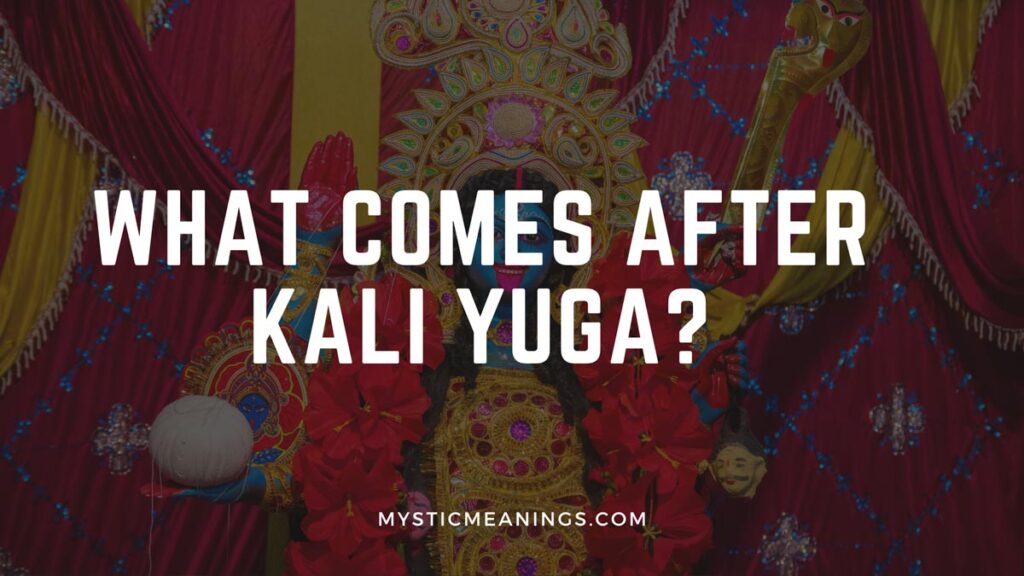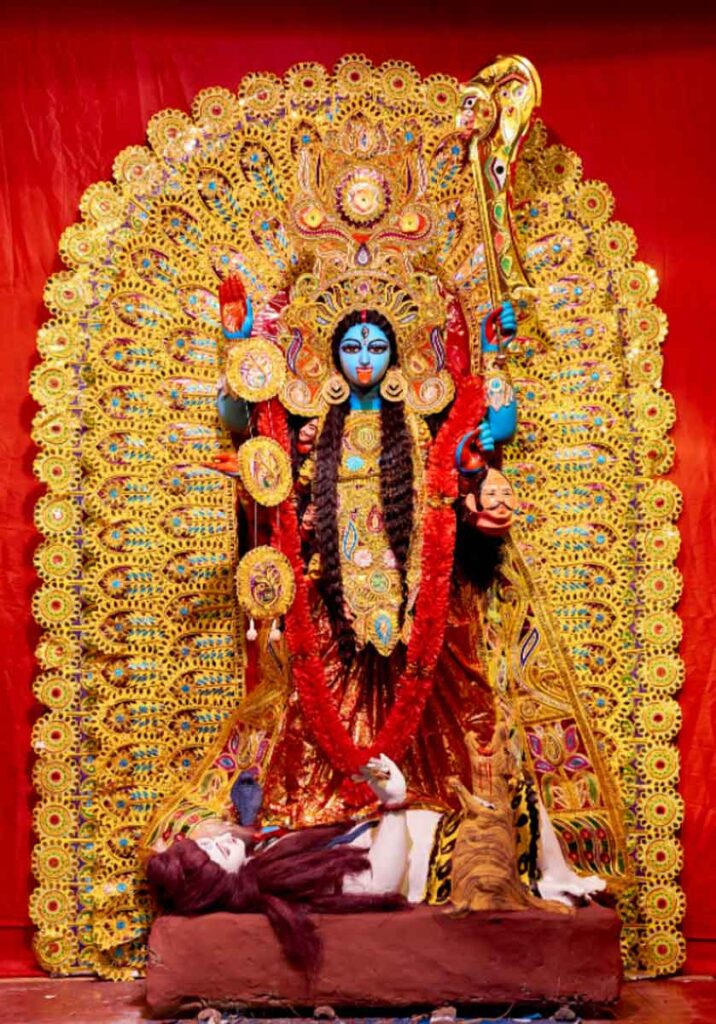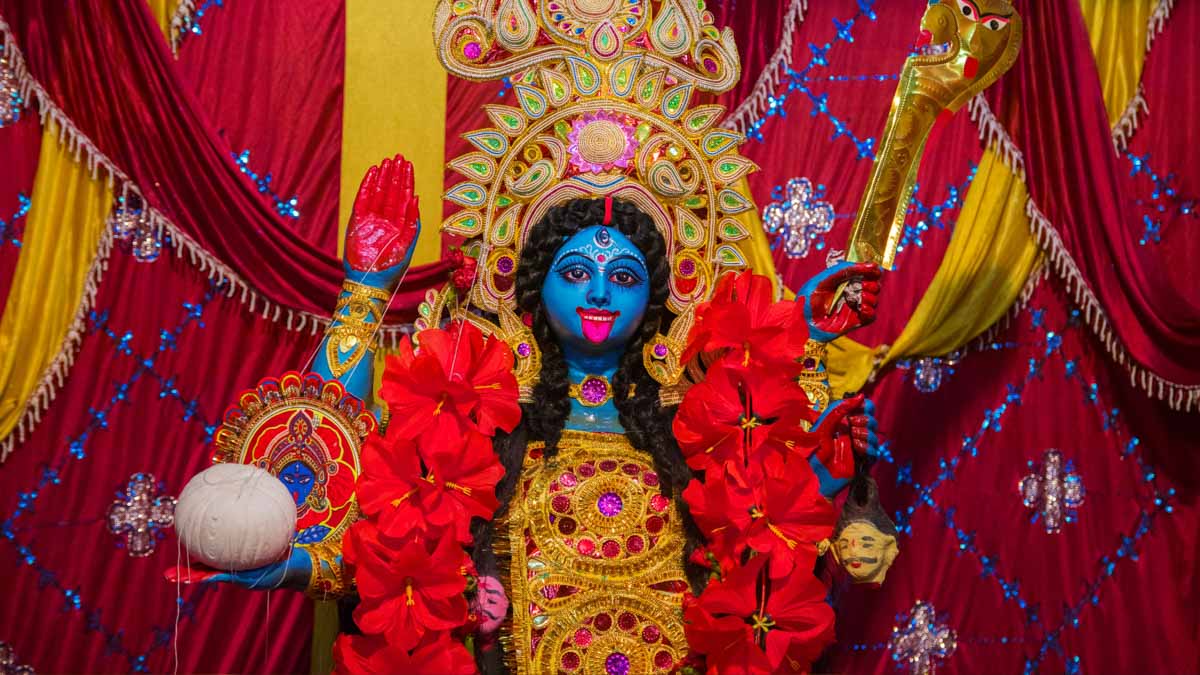What comes after kali yuga? Explore this guide to discover the answer for yourself.
The end of times appear in all religions. The Christian world calls it the Apocalypse. The Islam world calls it the Qayamat. Hinduism personifies the same idea as the end of Kali Yuga. In all three major religious beliefs, end times entail the end of a Satanic figure.
The Biblical Book of Revelations describes the Last Judgment of the Beast (the 666 angel number) in mysterious details. Islam also foretells the return of Jesus (Prophet Isa) to defeat the Satanic Dajjal. Hinduism describes the coming of the Kalki Avatar to put an end to the demon Kali and hence culminate the Kali Yuga. (Do not confuse Kali demon with Goddess Kali.)
Ancient texts describe the demon Kali in great detail. Hinduism believes that there are four Yugas or ages destined by the Gods. These Yugas appear and reappear in majestic cycles. Each Yuga consists of thousands of years! These Yugas are Satya, Treta, Dvapara, and Kali. The end of Kali Yuga will re-initiate the Satya Yuga, an era of divine truth on earth.

When did Kali Yuga Begin?
Imagine Kurukshetra, the endless battlefield of the Mahabharata. Krishna, the Mahavishnu in human form, is the protagonist of this great war. It is He who has been instrumental in gathering all the men from the length and breadth of India to this great war.
The war would last for eighteen days, and millions would die. Not only that, this great war marks the transition from one age to the next, from Dvapara to Kali.
Hindus believe that Kali Yuga started to take root after the departure of Krishna from this mortal world. The demon finally found his firm footing in this world during the reign of King Parikshit, a descendant of the Pandavas.
However, the story of the Kali demon is older than the beginning of the Kali Yuga. Kaurava prince Duryodhana was actually an incarnation of the demon. Despite his defeat in the war, the evil spirit still found its way back to unleash a reign of wickedness. Hindus believe that Lord Mahavishnu returns at the end of the Yuga cycle to vanquish the Kali demon and restore peace on earth.
What is the demon Kali?
The Puranas describe Kali as a Gandharva who turned into a demon in his jealousy. Once upon a time, Kali attended the Swayamvara of princess Damayanti. The Swayamvara is an ancient Indian tradition where the bride chooses her husband from the suitors who gather in a palace to ask her hand. Damayanti graced King Nala with her bridal garland, ignoring Kali and other Gods such as Indra and Varuna.
Burning in jealousy, Kali swore to his companion Dvapara that he would deprive Nala of his kingdom one day. After waiting for twelve years, he finally found the opportunity to influence Nala’s mind.
Then, he raised envy inside Pushkara. The brother of Nala invited the great King to a staged game of dice. His companion Dvapara morphed into the Vrisha die that would always oblige Pushkara and fail Nala.
Under the influence of Kali, Nala kept on playing until he lost his entire kingdom. Pushkara ordered him to go to exile in the forest with Damayanti. Nala, still under the influence of Kali, abandoned Damayanti in the forests. The beautiful Damayanti still stood by her husband and cursed all who caused Nala’s downfall.
Meanwhile, Nala came upon the serpent Karkotaka inside the forest. The snake king was suffering in fire due to Narada’s curse. He saved the Naga King from the torment. In return, Karkotaka offered his venom as an antidote to Kali’s influence in Nala. The serpent bit Nala, so his venom would burn Kali inside him. However, the poison also transformed Nala. He turned into a deformed dwarf named Bahuka.
Bahuka took the role as the charioteer of the King Rituparna. This King was a master of the game of dices. Eventually, he revealed the secrets of the dice to Nala. This knowledge freed Nala from Kali, and he finally got back to his kingdom. He also regained his divine form and reunited with Damayanti.
Kali again returned to the world as Duryodhana during the times of the Mahabharata. Evil omens heralded the birth of Duryodhana. He brayed out like a donkey on being born, to which other donkeys in the vicinity responded. Duryodhana’s story is also one of eternal jealousy. Tormented by envy towards the Pandavas, he finally caused the downfall of the Kauravas.
After Duryodhana’s death, Kali again appeared to King Parikshit as a sudra. The King was about to kill him but he humbly asked Parikshit for his permission to enter his kingdom. The King was touched by his humility, and he let Kali stay in the five wicked places. These were alcoholism, gambling, the greed for gold, prostitution, and animal slaughter. Kali cleverly took his place in the golden crown of Parikshit.
Under his influence, Pariskshit insulted a sleeping sage by placing a dead serpent around his neck. The sage’s son cursed the King to die by snakebite. Thus, with the death of Parikshit, Kali finally had a firm foothold in the world.
What are the characteristics of the demon Kali?
What are the characteristics of the Kali demon? He is an ancient demon born from the beginning of creation. One legend states that he was formed from the greatest poison of the world, Halahala. This poison came out from the great serpent Vasuki when the Gods and Demons pulled at his two ends during the churning of the oceans (Samudramanthana).
The Great God Shiva drank most of the poison and held it in his throat (Neelkantham). The little bit of poison that spilled over gave birth to the Kali demon.
Another legend states that Kali belongs to the lineage of Brahma. According to this myth, Brahma gave birth to a wicked object called Maleen Pataka from his back. This object later gave birth to lies (Mithya) and Adharma (dishonesty). The union of Mithya and Adharma gave birth to Dambha, or vanity. Dambha’s son and daughter are Krodha (or Rage) and Himsa (or envy). The union of anger and envy gave birth to the demon Kali. These metaphors indicate that the Kali Yuga carries the characters of all these vices.
Also, these metaphors call in urgency to sacrifice these vile thoughts, so that you can be free from the influence of the demon Kali.
What is the mantra for crossing Kali Yuga?
Brahma is also the father of Narada. Once, the wandering sage asked Brahma to reveal the secret mantra to survive Kali Yuga. Brahma then revealed the great secret! He said that a person must recite the name of the Parambrahman, Narayana, 35 million times in his lifetime. According to Hindu legends, this is the only way to save the mind from the influence of the Kali demon.
However, reciting a mantra 35 million times in a lifetime is not an easy task! Besides, keeping track of the mantra count would require the ultimate devotion. Perhaps, following these five simple steps to a spiritual life would yield the same results! Your purpose should be to free the soul from the wickedness of the present era (Kali Yuga), and the core spiritual principles are the same in any religion.
Can anyone determine the end of Kali Yuga?
The dates are conflicting! Some puranic sources mention more than 400,000 years until the end of this curse on the earth. However, some scholars argue that the Kali Yuga is about to end in 2025.
These calculations are based on a conversation between Lord Krishna and the Holy Goddess Ganga, as stated in the Brahma-Vaivarta Purana. The Lord assures Ganga that after 5,000 years of Kali Yuga, there would be a Golden Era of Satya Yuga. This era will last for 10,000 years.

Is it the end of duality?
The ancient texts also present a foreboding of cataclysmic events during the dissolution of ages. It mentions massive changes in the earth plane and warns that only a few may survive. However, living in the era of climate change, these warnings do not seem too far-fetched!
On a spiritual note, the dissolution of reality (Pralaya) may mean the end of duality as we know it. The Advaita philosophy in Hinduism believes that reality is an illusion formed out of conflicts of duality. In other words, all the wars, poverty, and inequality on earth are due to the illusion of separation from the non-dual Parambrahman, or the ultimate truth. Emotional attributes such as envy, ego, and falsehood create a separation from the true nature of God.
Maybe, you should try to practice the non-dualistic thought process to prepare for the epochal event!
Who is the Kalki Avatar?
The only information we have about the Kalki Avatar of Vishnu is from the Kalki Purana. It is a mysterious text written in Bengal about 1,500 years ago. The manuscript was unearthed in Dacca, Bangladesh. It describes the war between Kali and Kalki. Kalki worships Shiva, who presents him with a divine horse called Devdatta. Also, Lord Shiva grants Kalki a powerful sword to slay the demon.
A fierce battle ensues in which the Satya Yuga is personified. Kali Yuga dies from fatal wounds inflicted by Dharma and Satya Yuga. Dharma also has a personified presence in this text. Kalki himself kills twin generals of Kali demon, named Koka and Vikoka. After the war, Kalki returns to the magical Shambhala to rule the new world. It is interesting to note that the Tibetan Buddhist heritage also mentions Shambhala as the Kingdom of the Gods.
Summary of What Comes After Kali Yuga
The end of Kali Yuga is a mythical event that would usher in the golden age of Satya Yuga on earth. It is prophesied that the Kalki Avatar of Vishnu will wipe out the entire lineage of the demon Kalki. According to some Vedic scholars, this event will take place in 2025.
Learn more about non-duality, an ancient Indian spiritual and philosophical understanding known to be the essence of major religions throughout the world.

